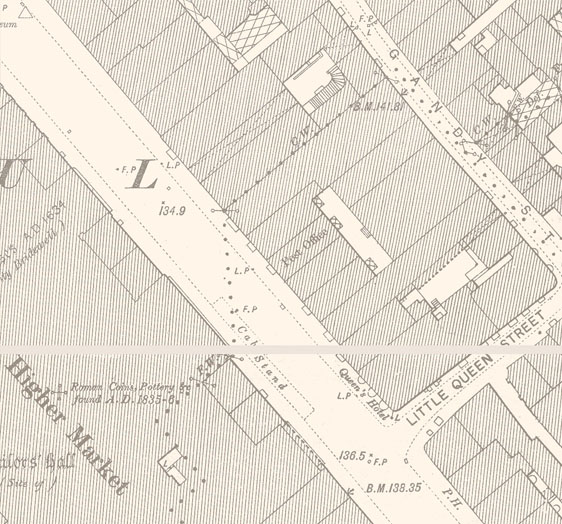Community researcher – Abigail Robinson
Whilst post offices existed prior to the Penny Post, it wasn’t until 1840 that the United Kingdom had a unified and reliable postal service. On the 10th Janurary 1840, such a service was introduced. In the 1780s, Exeter had a post office near the Cathedral, before it moved to Gandy Street and, by 1812, had moved again to Bedford Street.
However, by 1844 this existing post office was deemed insufficient. Mayor Brutton promoted the idea of a new post office in 1845, despite this leading to nothing of note. In 1848, suggestions were made as to the location of a possible new post office; several sites in Queen Street, one in Sidwell Street and a site opposite the Guildhall. It was suggested by the then former Mayor Brutton that there was a suitable site opposite the Higher Market on Queen Street.
Plans for this post office were drawn up and the site opposite the Higher Market was chosen. A central walkway would be built between Queen Street and Gandy Street. It would house not only a post office but also the Bankruptcy Court on its first floor. Mr William Hooper, a local builder, planned the build and obtained the needed funding, including an annual £80 contribution from the government. The building itself was built to be three storeys tall with a front façade carved in stone. This entrance had arched openings, decorated with a coat of arms above each entranceway. Above the ground floor façade are four Corinthian columns that hold up a balustrade roof-line.
The opening took place on 6th May 1850, but its modest opening caused some confusion over the post office’s new location.
The left side of the building was a dedicated post office, with a post master’s private room and a clerk’s entrance: the right side of the building was a stamp office. The second floor had offices. Over the years, this would change, Queen’s Chambers would be home to many shops, offices and a Middle School for Girls!
